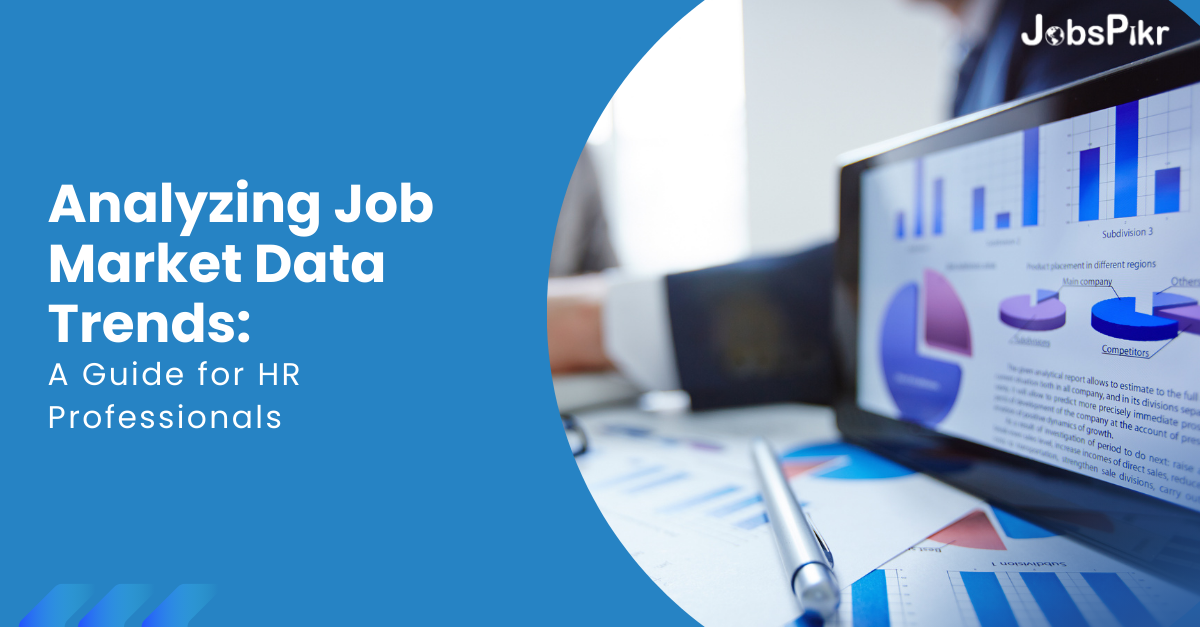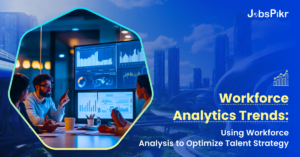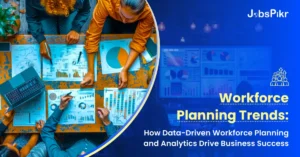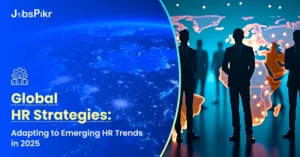The job market is a rapidly changing environment where various factors converge to shape the employment landscape. According to U.S. Bureau Of Labor Statistics, the total employment is expected to grow by approx.4.7M from 2022 to 2032.
Human Resource professionals must grasp these dynamics to successfully navigate the market’s complexities. They must consider job market trends such as technological advancements that create and obsolete jobs, fluctuating economic conditions affecting job security and growth, and evolving employee values prioritizing different benefits and workplace cultures.
Tracking current data on employment rates, industry demands, and worker demographics is essential. Additionally, HRs must stay informed about legislative changes impacting labor laws and employment practices. Understanding these factors enables HR professionals to adjust recruitment, retention, and development strategies to meet the shifting needs of both employers and employees.
Monitoring the gig economy’s growth and aligning talent management to these new realities is also critical. As traditional job roles transform, HR’s role becomes one of adaptation, ensuring that their organizations remain competitive and attractive to a diverse workforce.
Current Job Market Trends 2024
Enhancing Recruitment with Technology
Human Resources (HR) professionals increasingly leverage technology to streamline hiring processes. Artificial Intelligence (AI) tools now pre-screen candidates, increasing efficiency. Applicant Tracking Systems (ATS) organize candidate information, simplifying the recruitment pipeline. Virtual reality (VR) enhances the candidate experience, offering immersive job previews.
Social recruiting on platforms like LinkedIn remains a powerful tool, connecting recruiters with a vast pool of talent. HR must stay abreast of such technologies to remain competitive and attract top candidates effectively. Moreover, data analytics enables HR to make informed decisions, predicting recruitment trends and improving talent acquisition strategies.
Adopting Flexible Work Arrangements & Policies

Image Source: zavvy.io
To stay competitive and attractive to top talent, HR professionals must embrace flexible work arrangements. This includes offering remote work options, flexible hours, and altered week structures such as a four-day workweek. It is imperative to:
- Establish clear guidelines for remote work to ensure productivity and maintain accountability.
- Consider part-time roles that can fit the needs of a diverse workforce.
- Implement technology tools that allow for seamless communication and collaboration among team members, regardless of their physical location.
- Provide training and resources to both managers and workers on how to effectively operate within a flexible work environment.
- Regularly reassess and adapt policies to the changing needs of the workforce, ensuring that work-life balance is not just a buzzword, but a cultural norm within the organization.
Investing in Continuous Employee Development
In the swiftly evolving job market, HR departments prioritize employee development and continuous learning. This focus benefits both employees and organizations, fostering:
- Enhanced job satisfaction and engagement
- Greater innovation and adaptability
- Retention of top talent through career advancement opportunities
Implementing structured training programs, mentorship initiatives, and access to online learning platforms, employers can cultivate a culture of growth. Encouraging cross-departmental collaboration also exposes staff to various skills and perspectives, reinforcing a versatile workforce. By investing in their teams, companies not only adapt to but also shape future trends.
Cultivating Inclusive and Diverse Work Environments
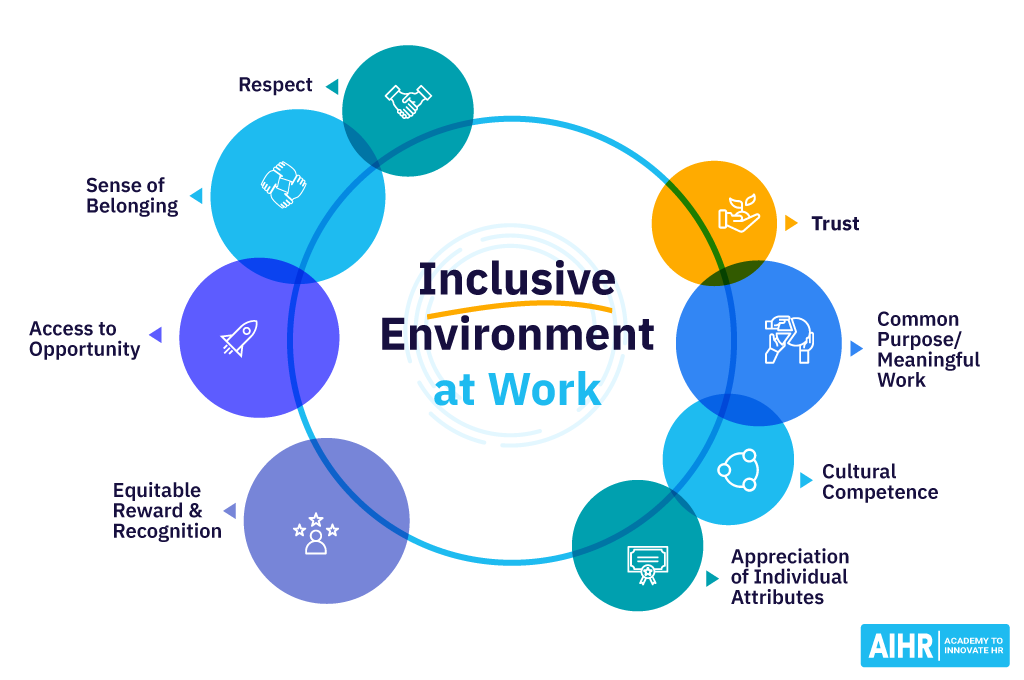
Image Source: AIHR
Human Resources professionals play a pivotal role in fostering workplaces where diversity and inclusion are not just buzzwords but core values. They must:
- Implement bias training, ensuring staff at all levels understand and embrace diversity.
- Craft policies that promote equal opportunities irrespective of race, gender, or background.
- Embrace flexible work arrangements to support different lifestyles and responsibilities.
- Actively recruit from diverse talent pools, yielding a workforce that mirrors the world’s richness.
- Establish affinity groups to provide support networks within the company.
- Regularly evaluate the workplace culture to identify and address subtle biases.
By prioritizing these practices, HR can create environments where every employee feels valued and empowered.
Data Analytics for Strategic HR Decisions
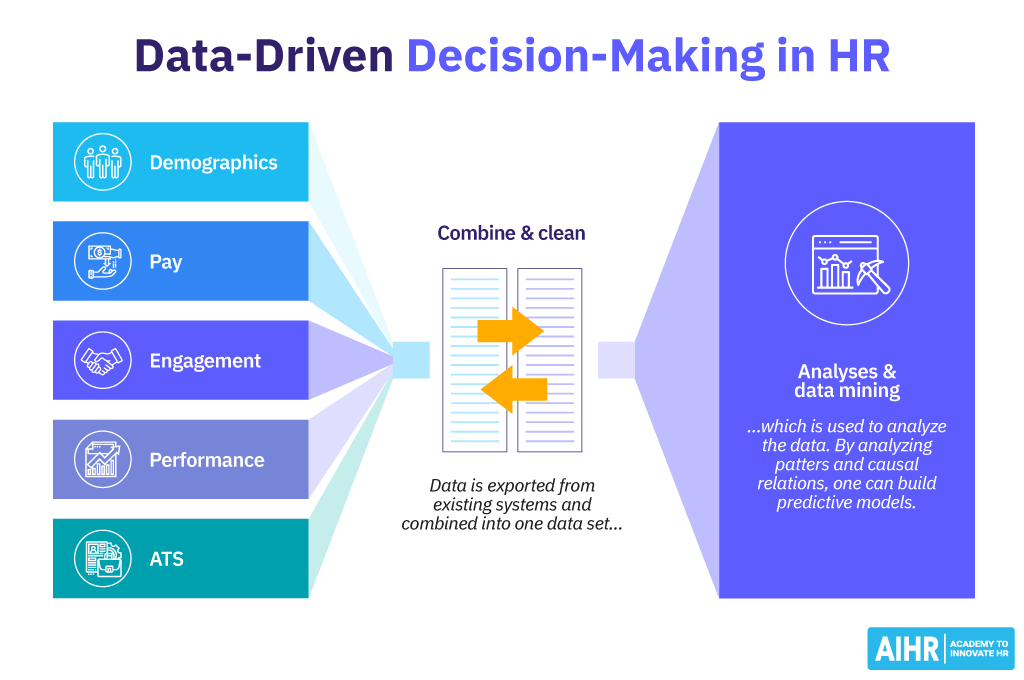
Image Source: AIHR
In today’s dynamic job market, human resources professionals harness the power of data analytics to make informed decisions. Key data points include:
- Salary Benchmarking: Examining industry standards allows organizations to stay competitive when attracting and retaining talent by offering fair compensation packages.
- Competitor Analysis: Understanding how competitors operate their businesses and manage their employees provides valuable insights which can inform strategic planning efforts.
- Training & Development Needs Assessment: Identifying skills gaps within an organization helps determine where additional training may be necessary, thereby ensuring that workforce capabilities remain aligned with business objectives.
By analyzing trends and forecasting needs, companies can align workforce capabilities with business objectives. Data-driven strategy formulation mitigates risks, boosts operational efficiency, and enhances employee satisfaction, thus positioning HR as a pivotal player in shaping the organizational future.
Fostering Employer Branding and Employee Value Proposition
HR professionals must prioritize employer branding to attract and retain talented individuals. A strong employer brand reflects a company’s values, culture, and the benefits it offers, thereby serving as a magnet for prospective employees. To effectively communicate this, HR should:
- Craft a compelling Employee Value Proposition (EVP) that encapsulates why the company is a great place to work.
- Utilize social media platforms and the company’s career page to showcase the organization’s culture and success stories.
- Engage current employees as brand ambassadors to provide authentic insights into working at the company.
- Measure and refine the EVP based on employee feedback to ensure it remains aligned with what current and potential employees value most.
Executing these strategies will enhance the organization’s reputation, making it an employer of choice in a competitive job market.
Conclusion
In the rapidly evolving landscape of HR and recruitment, staying abreast of the latest job market trends is non-negotiable. HR professionals are implored to harness innovative tools like JobsPikr to dissect big data, pinpoint emerging industry patterns, and tailor their talent acquisition strategies accordingly. The use of JobsPikr Insights can lead to more informed decision-making and a competitive edge in talent sourcing.For a seamless integration of data intelligence into your HR practices, contact us today!
